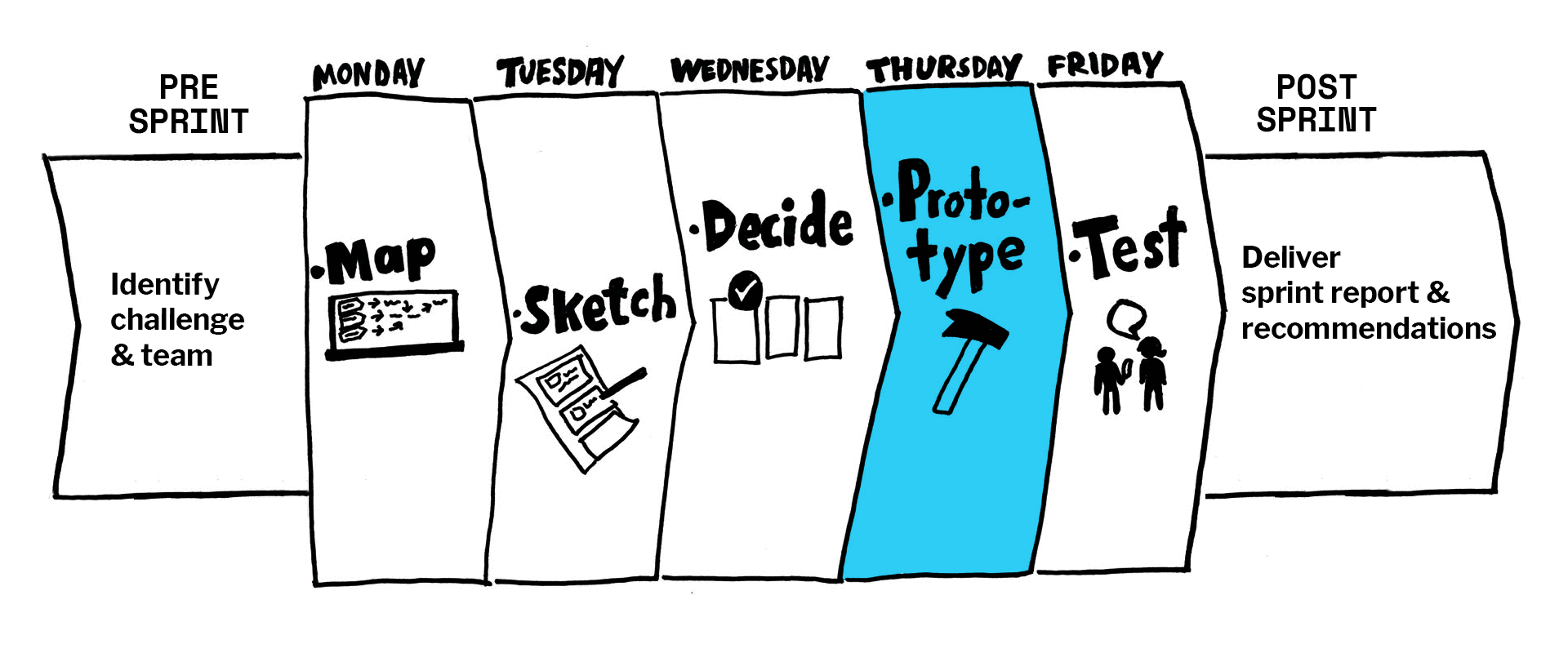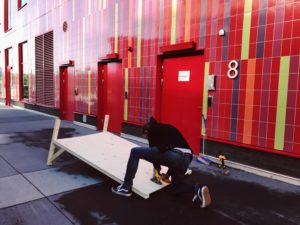
Prototype your Design Sprint ideas
Day #4 Can we build it? Yes we can!*
This is the day when the hard work you’ve done up until now comes to fruition. It’s time to make your prototypes. They don’t have to be beautiful; they just have to appear to be functioning in the eyes of the user group that will be testing them.
What you’re making will have a huge impact on the tools and material you need to make it. When we built a magic mirror for Bisnode, for example, we needed a hammer and planks of wood, as well as a computer and sheets of mirrored cellophane. For Arbetsförmedling, where we developed new interview processes, we could build everything with pens paper and HTML coding.

Bisnode’s Head of Innovation builds the magic mirror prototype frame on Day 4.
Prototyping two ideas takes planning!
To build prototypes effectively you will need a plan – particularly if you are building two of them in a day. The plan should include the tools you need, a time schedule, and the roles of the people in the group – i.e. who will make it, who will write copy, who will source any products, and who will bring the different elements together. With that set, it’s time to knuckle down, get building and look past the imperfections of what you’re doing.
With a few hours left in the day, you should have an internal trial run of the prototypes, to give the team the chance to fix any issues. Let everybody express their opinions and then decide what can and can’t be achieved before the days end.
An external facilitator makes sure people don’t get stuck on details and that prototype production happens smoothly at the required pace.
*Much of this information can be found in “SPRINT – how to solve big problems and test new ideas in just five days”, by Jake Knapp and John Zeratsky, from Google Ventures. We’ve just tailored it to find a way that we think works best for our clients and delivers the best results for them.